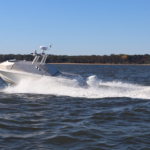By Emelie Rutherford A Marine Corps board is expected to sign off this month on a new plan for the future Marine Personnel Carrier (MPC), a medium-weight armored vehicle program recently delayed by two years because of fiscal constraints. Service officials decided in April to halt plans to allow the MPC to enter into the technology demonstration stage and then issue a request for proposals for it--actions expected this past spring--because of a lack of funding. A new plan shifting…
Contract Updates
Aerojet Rocketdyne Coleman Aerospace Inc. a wholly owned subsidiary of Aerojet Rocketdyne Inc. (Orlando, Florida) – $10,333,902
Aerojet Rocketdyne, Coleman Aerospace Inc., a wholly owned subsidiary of Aerojet Rocketdyne Inc., Orlando, Florida, is being awarded a $10,333,902 modification (P00258) to exercise an option to a previously awarded contract (HQ1047-14-C-0001) to increase calendar year 2026 program management office…
The Bell Boeing Joint Project Office (California, Maryland) – $262,069,451
The Bell Boeing Joint Project Office, California, Maryland, has been awarded a maximum $262,069,451 fixed-price-incentive, performance-based contract for V-22 Phase II consumable market basket items. This was a sole-source acquisition using justification 10 U.S. Code 3204 (a)(1), as stated in…
Northrop Grumman Systems Corp. (Oklahoma City, Oklahoma) – $264,867,008
Northrop Grumman Systems Corp., Oklahoma City, Oklahoma, has been awarded an estimated $264,867,008 modification to award a hybrid firm-fixed-price and cost-plus-fixed-fee delivery order (SPRTA1-26-F-0020) against a five-year indefinite-delivery/indefinite-quantity contract (SPRTA1-19-D-0001) for B-2 rudders. This was a sole-source acquisition using justification…
General Dynamics Land Systems Inc. (Sterling Heights, Michigan) – $11,146,013
General Dynamics Land Systems Inc., Sterling Heights, Michigan, was awarded an $11,146,013 modification (P00122) to contract W56HZV-22-C-0012 to exercise option hours for Abrams system technical support. Work will be performed in Sterling Heights, Michigan, with an estimated completion date of…












